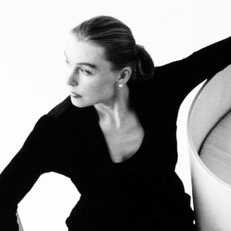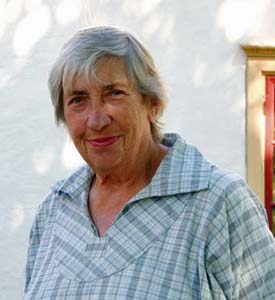
Stephan Gip, (born 5 April 1936) is a Swedish designer and interior designer. He is best known for the furniture design called Robust in 1962.

Stephan Gip, (born 5 April 1936) is a Swedish designer and interior designer. He is best known for the furniture design called Robust in 1962.
Stephan Gip was born in Luleå and graduated from Högre konstindustriella skolan (today known as Konstfack) in Stockholm in 1961 and his exam work was a children's furniture in beech tree. [1] After graduation he started working for the company Skrivrit, creating designs for children's furniture for institutions, daycare centres, and pre-schools. [2] Gip's ambition was to design furniture for children, not furniture in mini-formatted grown-up design. [3] Along with Stina Sandels, he refined measurements for the furniture after they both did tests at Barnpsykologiska forskningslaboratiet in Kungsholmen in Stockholm. [4] This resulted in the children's furniture line ”BA-serien,” which was produced for the NK warehouse in Stockholm. The furniture could be pushed into one another or stacked upon each other, and thereby required minimal space when not being used. [3] [5]

At the same time, Gip designed and created the children's high chair ”Robust”. [6] The point with the design was that the child using the chair could sit at the same height as the parents at the dinner table, leading to the child being better able to be part of the family dinner and life. [4] Robust was designed and created at the furniture company Gärsnäs AB in Gärsnäs. [7] The chair got the typical round wooden staff with a big red and yellow board, and leather straps at the front so the child could not glide forward. [8] [6] [2] The chair could be used by children up to the age of five; after the age of five it could still be used if the wooden staff and leather strap were removed. [6] The Robust line also included low chairs and tables and a level-bed. [6] The chair has over the years been adapted to the current styles of its time. As the name implies, the chair is robust and can manage pressure up to 70 kg, and can fall over without breaking. [9] Since its creation the Robust chair has sold over 200,000 units. [10] [11]
In the mid 1960s, Gip presented a line of blow-up furniture under the name of ”Blow-Up”. [2] It was produced in soft PVC at Hagaplast AB. [5] The furniture could be inflated with the help of a vacuum cleaner or pump. In difference to Gip's Robust children's furniture, the Blow-Up line was a wear-and-tear kind of furniture, that was disposable when broken. [12] [5]
Gip co-operated with Mo och Domsjö AB, [5] launching a line of fiber furniture consisting of build-it yourself chairs and tables. The furnitures came in parts in flat cardboard boxes. [13] [14] [15] They could easily be put together without screws, and were stabilized by cell-cartons. Along with Perstorp AB, Gip did the furniture line ”P-sängen,” a line for adults, and created a room within the room with a two-level bed in form of an octagon, with a surface of plastic laminate in bright colours. The bottom bunk was a place to play, and the upper bunk served as a double bed. [3]

Adolf Frederick, or Adolph Frederick was King of Sweden from 1751 until his death. He was the son of Christian August of Holstein-Gottorp, Prince of Eutin, and Albertina Frederica of Baden-Durlach.

Ulrika Eleonora or Ulrica Eleanor, known as Ulrika Eleonora the Younger, was Queen of Sweden, reigning in her own right from 5 December 1718 until her abdication on 29 February 1720 in favour of her husband King Frederick, and then as his consort until her death.

Ulrika Eleonora of Denmark and Norway was Queen of Sweden as the wife of King Charles XI.

Hedvig Ulrika Taube, also Countess von Hessenstein was a Swedish courtier and countess, a Holy Roman countess of the Empire, and royal mistress to king Frederick I of Sweden from 1731 to 1744. She is regarded as the only official royal mistress in Swedish history.

Konstfack, or University of Arts, Crafts and Design, is a university college for higher education in the area of art, crafts and design in Stockholm, Sweden.

Bjärka-Säby Château is a baroque style château located south of Linköping, in Östergötland County, Sweden. In Bjärka-Säby there are actually two châteaus, simply referred to as the old and the new château of Bjärka-Säby. The older building dates from 1632. The new one is owned by the local congregation of the Pentecostal Church Out of the château's common life, meetings and retreats an ecumenical community has been born, though not a monastery as stated in some articles. This community, Ekumeniska Kommuniteten i Bjärka-Säby (EKiBS), is a community with its members living scattered around Sweden and the other Scandinavian countries but having its main gatherings and heart at the château of Bjärka-Säby.

Bollhuset, also called Stora Bollhuset, Bollhusteatern, and Gamla Bollhuset at various times, was the name of the first theater in Stockholm, Sweden; it was the first Swedish theater and the first real theater building in the whole of Scandinavia. The name "Bollhuset" means "The Ball House", and it was built in 1627 for ball sports and used in this way for forty years. The name Lejonkulan, however, was, in fact, the name of a different building, which was also used by the same theater in the 17th century.

Charlotte Slottsberg was a Swedish ballerina. She was one of the first native members of the Royal Swedish Ballet. She was also known as a courtesan and as the controversial mistress of the future Charles XIII of Sweden. She was the first native star of the Royal Swedish Ballet.

Christina Augusta Löwenhielm née von Fersen, was a Swedish countess and courtier. She is known for her love affair with the later Charles XIII of Sweden. She is also famous in history as one of "the three graces" of the Gustavian age; three ladies-in-waiting immortalized in the poem Gracernas döpelse by Johan Henric Kellgren, and known profiles of the epoch.
Marguerite Du Londel or Dulondel was a French ballerina, actress and singer (soprano). She was active in the French theater in Sweden and at that time attracted great fame. She is also known for her relationship with king Adolf Frederick of Sweden.
Frank Etc. AB is a Swedish design company specialized in industrial design and graphic design. It was founded in Stockholm in 1994 by the industrial designer Nikolaus Frank and the graphic designer Cecilia Frank.
Nikolaus Frank is a Swedish industrial designer MFA ID, graduated from University College of Arts, Crafts and Design (Konstfack), Department of Industrial design in 1987. Together with his wife Cecilia Frank he runs the design company Frank Etc. AB in Stockholm, with focus on consumer products and conceptual design based on future technology.
Claesson Koivisto Rune is a Swedish architectural partnership, founded in 1995 by Mårten Claesson, Eero Koivisto and Ola Rune. It started as an architectural firm, but has since become a multi-disciplinary office with an equal emphasis on both architecture and design.

Stina Wirsén Hedengren, Swedish author and illustrator, born 1968 in Älvsjö, a suburb of Stockholm, Sweden. Stina Wirsén, educated at Konstfack in Stockholm 1985–1992, was the in-house illustrator at Dagens Nyheter between 1990–2010. During this period she was the head of the papers illustration department for several years. After 2010 she’s been working as a freelance illustrator and author. Over the years she has received several awards for her illustrations. With her illustrations, Stina Wirsén often switches between different genres. That also applies to her children’s books; they vary in target group, genre, style and method. She’s been illustrating ABC-books for the youngest, anthologies, text- and picture books. She is married to Swedish graphic designer and art director Pompe Hedengren.

Hans Ehrich is a Swedish industrial designer. Together with Tom Ahlström he, in 1968, founded A&E Design, a company which Ehrich still (2021) manages. Between 1982 and 2002 he was the CEO of the sister company Interdesign in Stockholm. Internationally, he is regarded one of Sweden’s leading product designers, and is referred to as the “Grand Seigneur” of Swedish industrial design. Ehrich is living in Stockholm and Berlin.

Anna Ingrid Caroline Schlyter, is a Swedish artist focusing on sculpture and installations. She is best known for her furniture sculptures that have been exhibited in numerous countries.

Lena Larsson, née Rabenius, was a Swedish interior designer, known as a pioneer for the unconventional, family-friendly environments she created, and for the 1960s modern wear-and-tear ideal. She was married in 1940 to architect Mårten Larsson and they had four children. She was a member of the Rabenius family belonging to the Swedish nobility.

Edit Gunilla Margareta Lagerbielke (1926–2013) was a Swedish textile artist who exerted considerable influence on arts and crafts in Sweden as a result of her heading Konstfack and chairing the Swedish Arts Grants Committee. She is also remembered for the textile works she created with her husband Lars Johanson which were exhibited in Gothenburg in 1970.
Caroline Hebbe was a Swedish art photographer active in the 1950s-1970s and working in a subjective style in affinity with the Fotoform movement. She later became an international curator of Swedish arts, crafts and design.
Henriette Killander (1816–1898), was a Swedish furniture designer and music composer.
| Wikimedia Commons has media related to Stephan Gip . |